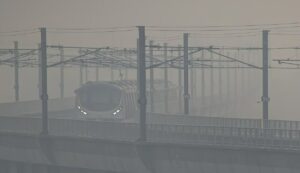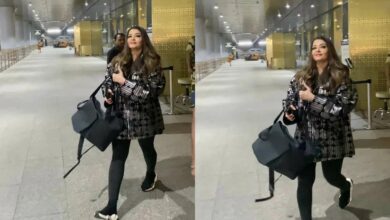Air quality in Delhi becomes very poor; AQI crosses 336

According to SAFAR statistics, the worst-hit locations were Anand Vihar and Jahangirpuri, with AQIs of 392 and 390, respectively. In Dwarka and Najafgarh, the AQI at RK Puram was measured at 359 and 348. Six different levels are used to classify air quality: “Good” is defined as 0–50, “Satisfactory” as 51–100, “Moderate” as 101–200, “Poor” as 201-300, “Very Poor” as 301–400, and “Severe” as 401–500.
According to images released by a news agency, smog blanketed several areas of Delhi in the early hours of the morning as the air quality continued to worsen.
SOURCE AND CREDIT: ANI
#WATCH | Delhi: A thin layer of smog engulfs the National Capital as the air quality continues to deteriorate.
(Visuals from Kartavya Path and surrounding areas) pic.twitter.com/8BzYPW4NKZ
— ANI (@ANI) October 24, 2024
Restrictions in Delhi due to rising Pollution
According to the India Meteorological Department (IMD), Delhi’s air quality is predicted to remain “very poor” for the next several days owing to unfavorable meteorological conditions. One of the main causes of the current decline in air quality is stubble burning in Punjab and nearby Aryana.
The Centre has introduced a number of limitations starting on October 22 as part of stage two of the Graded Response Action Plan (GRAP) in response to the deteriorating air quality. Water spraying and mechanical sweeping on designated roads will be done everyday under stage two of the GRAP.
Additionally, the news media will publish dos and don’ts for minimizing polluting operations, discourage the use of power generator sets, and enforce dust control measures at construction and demolition sites. In order to deter private transportation, more bus and metro services will be launched, traffic officers will be stationed in traffic hotspots, and parking prices will be raised.
Environmental Minister Weighs in Delhi
In a letter sent on Wednesday, Delhi Environment Minister Gopal Rai urged Union Environment Minister Bhupender Yadav to call a conference with all relevant parties to discuss the increasing levels of air pollution in the nation’s capital.
Rai followed up on his previous requests for a meeting to discuss cloud seeding as a viable option to stop the growing pollution in his third letter to the Union Environment Minister. He emphasized that the Delhi government is looking at other options for quick relief and that the Winter Action Plan was put into effect on September 25 of this year.
The day before, Rai sent letters to the transport ministers of Rajasthan, Uttar Pradesh, and Haryana, pleading with them to make sure that, due to GRAP II regulations, no diesel buses were operated from their states to the national capital.
According to him, diesel buses release a significant quantity of dangerous pollutants that cause respiratory disorders and other health problems. He went on to say, “Interstate traffic is adding to Delhi’s already bad air quality, which is making matters worse.”





